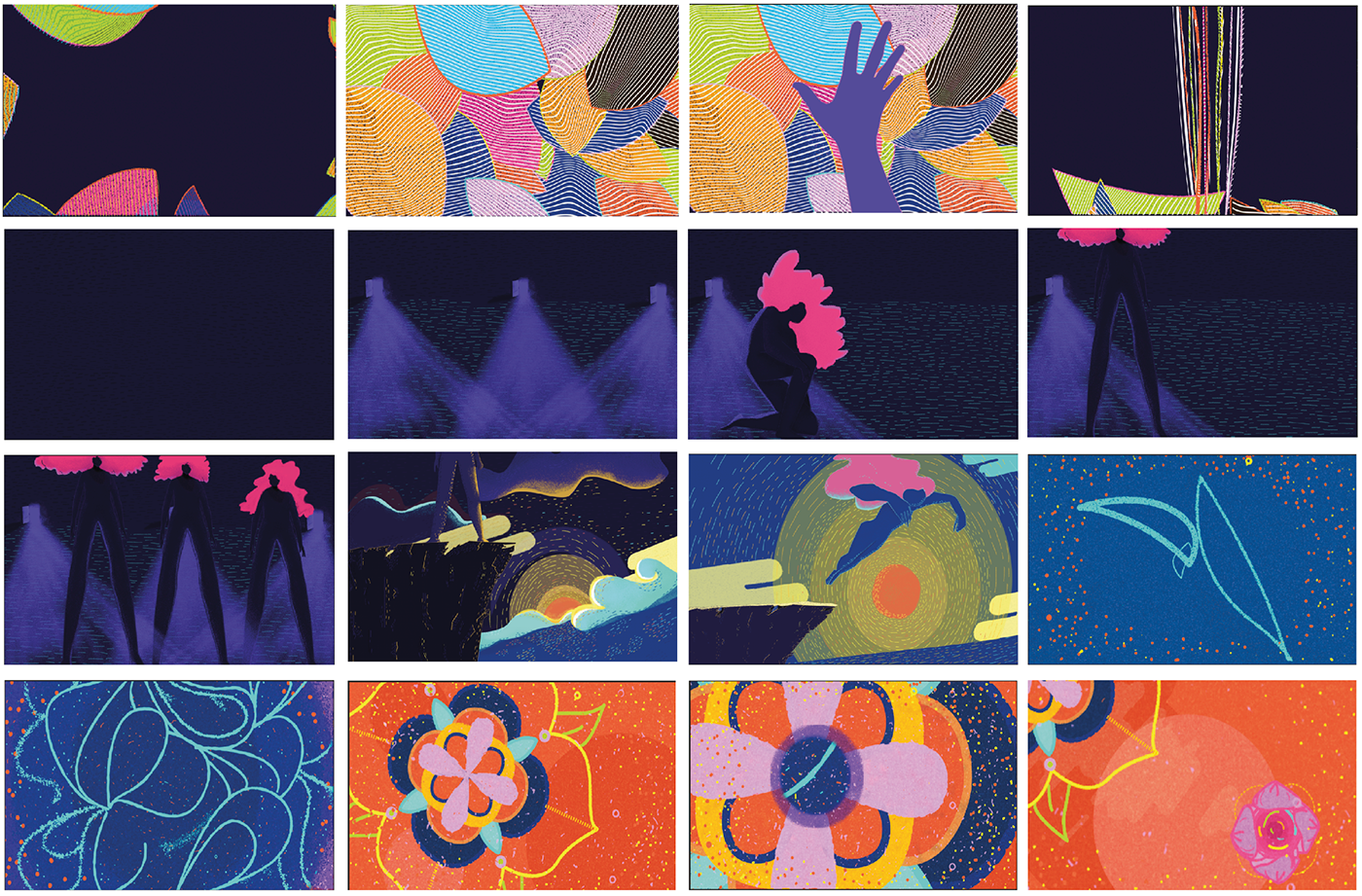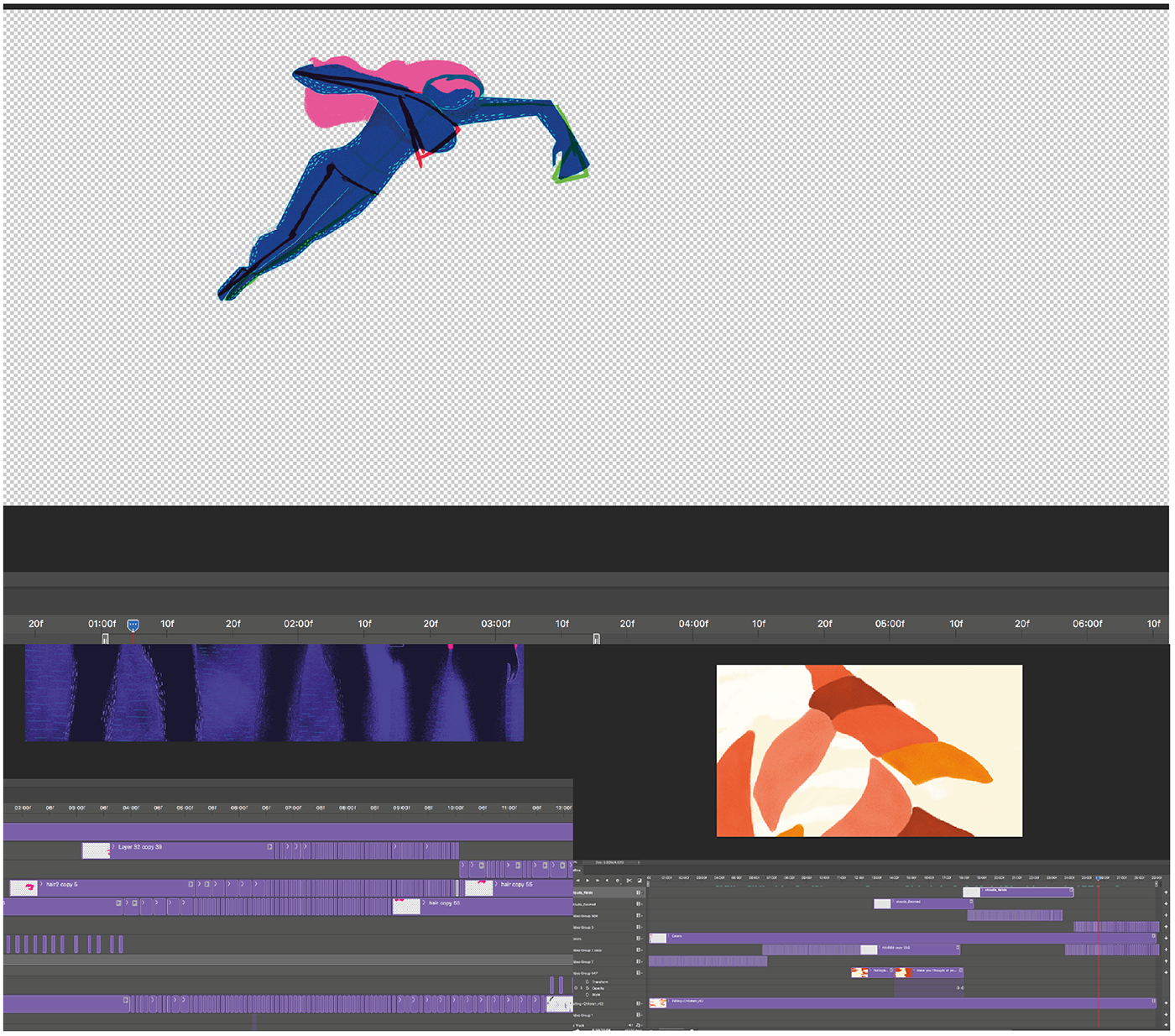2018 Winner Experience

























2018 Top Talent
Submissions 8102 Semifinalists 2454 Honorees 64
Commercial
Animation / Motion Graphics
Winner
Color
By Wooyoung Kim
Finalist
Giant Plant Eater Hypothesis
By Matthias Ries | Charlotte Hintzmann | Matthias Ries
Designation
CoMotion 2018 Title Sequence
By Sofie Lee | Sunny B. Yazdani | Madison Ellis | Joel Desmond | Francisco Betancourt | Champ Techawongthawon | Gretel Cummings | Sofie Lee | Omid Seraj | Houhan Wang | Taylor Thorne | Augustus Rachels | Jamie Gray | Kayla Beehler | Matt Van Rys | Patrick Knip | Anastasia Skrebneva | Woo Yong (Leo) Cho | Dasul Kim | Sam Button | Nestor Tomaselli | Aishwarya Sadasivan | Ana Ospina | James Ortwerth | Vero Gomez | Yunho Park | Yixin Li | Leah EvansCommercial
Packaging Design
Winner
Käfer: Coffee + Roaster
By Jordan Richards
Finalist
Packaging Design - Oryza Rice
By Joanna Shuen
Finalist
鼠來寶 The healthy gifts from chipmunks
By Yenya You | Hsinchih Tsai
Finalist
Vuelta Powdered Paint
By Yi Jun LinCommercial
Photography
Winner
GENDERLESS
By Suhail Suri | Disha Bajaj
Finalist
In My head
By Bonghee Kang
Finalist
Stroboscopic Athlete
By Tom Hegen
Honorable Mention
Nightcrawler Title Sequence
By Dillon KingCommercial
Print / Graphic / Illustration
Winner
Works in Progress CalArts Graphic Design Program Show
By Junki Hong
Finalist
My Rule
By yejin choi | SeoYeong Won | SeungYeon Ryu | JunWoo Kang
Finalist
ETH ZURICH
By Chloe Lee
Finalist
-BOV
By Elena Donets
Designation
FLEX'IE (The DIY Letter Kit)
By Hat-Ssal Kim
Designation
SYZYGY
By jinke wang
Designation
Playfully
By Krishnapriya Dutta GuptaCommercial
Video Editing / Post-Production
Winner
That's So Muji
By Annette Lee | Brigitta Martiana
Finalist
GAMMA–INTERIOR
By Krupkin Aleksei
Finalist
SEALSON®
By YuShu Chien
Finalist
Google Pitch - Here and now
By Sofia Coelho | Patricia Arguelles | Valentina OrjuelaCommercial
Web / App / Game Design
Winner
MUJI IOT Concept
By kihyun Kim
Finalist
Neo- Investment app
By Geethu Sebastian
Finalist
Elevate
By Jake Anderson | Bradlee Thielen | Jake Anderson | Amy Spengler
Finalist
Flow
By Ashlynn TanFine Art
Animation / Motion Graphics
Winner
be still, get up
By Siena Mae Allison
Finalist
David Lynch On Ideas
By Zoe Hu
Finalist
The Designers
By Rohan McDonald
Honorable Mention
¿Que es ser Mexicano? TRAILER
By Veró Gómez
Honorable Mention
Black Behind the Ear: Using Motion Graphics to Encourage Self-awareness and Embrace Racial Heritage.
By Carolina Lopez
Honorable Mention
VICE
By Maddy HodgettsFine Art
Graphic Design / Print
Winner
Residue
By Chetan Singh Kunwar
Finalist
BRUTAL: Views from Brazil's Concrete Utopia
By Tais Ghelli Bishop
Finalist
Architecture Posters
By Janny Ji
Honorable Mention
Peeping Museum
By LUYING SALLIE XU
Honorable Mention
The Filter Bubble: Algorithm to Manipulate Thoughts
By Da Eun Hwang | Min Ji Kim | Yoo Sun Kang | Min Yeong GwakFine Art
Illustration
Winner
Questionnaire
By Ben Bueno
Finalist
The Yijing
By Florian Leible
Finalist
Revolution
By Veró GómezFine Art
Photography
Winner
Afro Indy Dandy
By Alena Sidorova (Gelen)
Finalist
The Quarry Series
By Tom Hegen
Honorable Mention
波み立つ
By Jia-Hong HuangFine Art
Video Editing / Post-Production
Winner
Every Grain of Rice
By Carol Nguyen
Finalist
Falegname
By Andrea Zangheri
Honorable Mention
Erythrophobia
By Liza Gusarova | Vera RomanovaSocial Impact
Photography / Print / Illustration / Graphic
Winner
HABITAT – human altered landscapes
By Tom Hegen
Finalist
GREETINGS FROM GEORGIA : A SOUVENIR BOOK OF DATA
By Sarthak Kathuria
Finalist
Li General Store
By Joy Li
Honorable Mention
Renew the school
By Wang Li-Ting | Ya Yu Tseng | Yu Tung Hsu | Yun Chi Chen | Li Ting Wang
Honorable Mention
slow-fish
By kaunhou cheang
Designation
If BART Can Speak
By Zheng JianSocial Impact
Video Editing / Post-Production / Animation / Motion Graphics
Winner
You Are Not Okay
By Heewan Park | Doi Hwang | Heewan Park | Yumi Kim
Finalist
OLYMPIAK SG
By Jason Yong
Finalist
Digital Afterlife
By Hwirin Park
Honorable Mention
Winfried
By Jana Lenhard | Christopher Vogt | Victoria SandvoßSocial Impact
Web / App / Game Design
Winner
Incognita | Abject Poverty in Major Cities
By Ethelia Lung
Finalist
Ukemented Reality
By Aimy Qi
Finalist
Tome: Connecting Real People to Real Books
By Chung Yu ChenBlack Behind the Ear: Using Motion Graphics to Encourage Self-awareness and Embrace Racial Heritage.
Carolina Lopez
Honorable Mention | Fine Art - Animation / Motion Graphics
MFA Thesis Project Black Behind the Ear is an animated visual representation of Elizabeth Acevedo’s poem “Hair”. This poem uses hair as a metaphorical element to represent the internalized racism and racial amnesia predominant in the Dominican Republic, a place that owes African slaves for much of the island’s racial, and cultural heritage.
Graduation Film, Rochester Institute of Technology
Design & Animation: Carolina Lopez
Poem: Elizabeth Acevedo
Thesis Advisors: Dan DeLuna, Chris Jackson, Kijana Crawford
Goal:
This motion graphics piece intends to encourage self-awareness in a time when embracing one’s culture and race can break the ossified schemes passed through generations about personality standards based on physical attributes.
Concept:
In 1833, one of the most well-known Dominican poet Juan Antonio Alix wrote the poem “El negro detrás de la oreja”. The poem became so influential that the title of the poem became a colloquialism meaning someone with the black behind its ear means that has an African ancestry but hides it.
The concept of this project was born from this phrase. This project embraces heritage rather than ignore it. It hopes to change “Black Behind the Ear” from an insult to a prideful descriptor, giving the audience an uplifting perspective of themselves.
Poem by: Elizabeth Acevedo
Process:
Throughout the making of Black Behind the Ear the visualization of the story along with its animation style changed from what was planned at the beginning. The first storyboard intended to be more abstract inspired by botanical shapes where everything would be symbolized to go along Elizabeth Acevedo’s voice.
While doing more research on the target audience and finding more cultural references the design shifted form to include more symbolic figures that would accurately express, the feelings and phrases within the poem. Keeping the abstract concept intact the visuals became more significant and deeper in meaning.
1st Storyboard



Previous style frame

In the latest version, the visuals shifted from an abstract and delicate shapes to more aggressive symbols and representation of the words said in order to create an aggressive feel along with representing femininity in the Caribbean.
The style and transitions transitioned towards stop motion animation style and stylized shapes and textures. Making the piece have an “crafty, handmade look and feel” in order to represent the struggle the ancestors had to go through to fight for their rights.

Latest Storyboard


Choosing the color palette for Black Behind the Ear was one of the most important decisions made. During the first half of the piece, the girl is in denial because of what her past generations (represented by the mother in the poem) has taught her. This dark emotional stage is represented with colors reminiscent of nighttime. The colors are cold with the exception of the character’s hair to contrast with the darkness and to symbolize the strength of their heritage.
The second half comes as a sunrise to represent the awakening of the girl’s mind towards something being wrong, trying now to run from all the stereotypes and beauty standards her past has set on her and looking forward to become self-aware. This stage is mainly based on warm bright colors which usually are used for optimism, passion, aggressiveness and strength.
Animation & Texture:
The main challenge for this entire project was the animation part, since it was the first time I tackled frame by frame animation with several illustrated details.
The first step was to animate the overall piece, then polish, and since the entire style was based on using chalk-like textures I had to go back and texturize every frame. At the end around 3,000 frames were uniquely worked on.

The audio version used for this project is a live voice recording of Elizabeth Acevedo by
www.SlamFind.com.